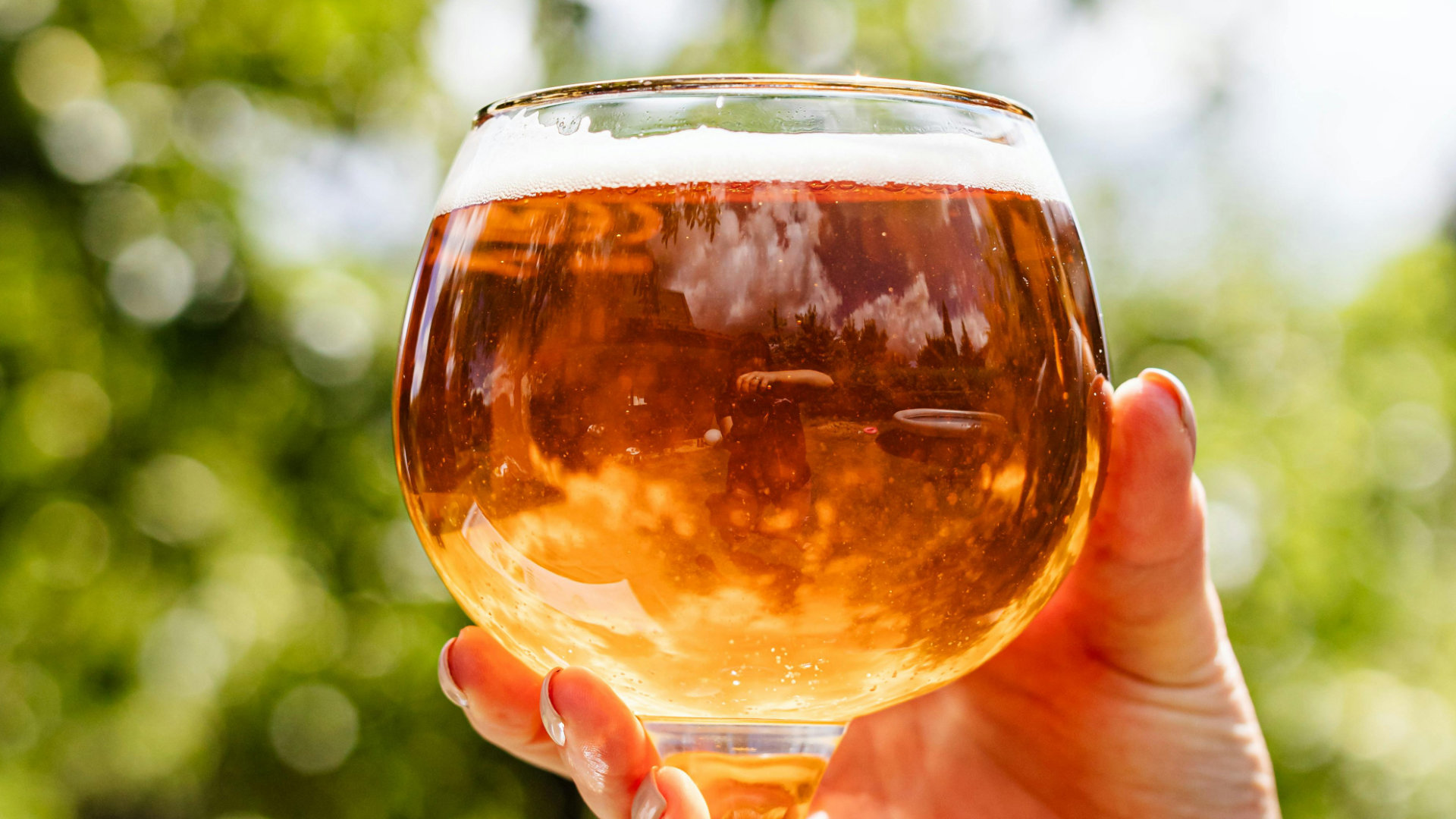A few months ago, Gareth (of Dark Farm Hops & Homebrewing) was invited to give a talk at Reading Amateur Brewers (RAB), so in October he packed up a Brew Tank and a few other Dark Farm and MASHED! goodies and set off to meet this active bunch of homebrewers over at Phantom Brewing Co. He came back really inspired and impressed by the level of activity and organisation within this homebrew club. So I asked Daren Fearon, Chair for RAB, for a chat to discover more.
YB: Tell us about RAB! How many members do you have and what mix of experience make up the club?
DF: We have just over 100 members currently signed up to our mailing list with usually 25-30 enthusiastic brewers turning up to our monthly meetups and events.
We welcome all levels of experience and have members who have just brewed a handful of times with friends and are eyeing up their first kits, all the way to folks who have been brewing for 10+ years.
Our members also like to brew all styles of beer, from Czech Lagers, Hazy Pale Ales, Wee Heavies and heavily fruited Wild Beers.
YB: What would you say people most enjoy about being part of a brewing club?
DF: I think it’s just about having that community at your fingertips – I can’t over-exaggerate how valuable a resource that can be for brewers of all levels. It’s great for bouncing ideas around, taking inspiration from each other’s recipes, getting help when you run into bother on a brew day and for helping you pick out all the subtleties of the final product as we all have different blind-spots and sensitivities.
YB: What advice would you give to others looking to set up an amateur brewing group?
DF: Just go for it. When we first setup RAB we were confident that there was a sufficient beer scene in the area that could host the club based on the great breweries and venues we have in the town, but there was a part of us that was convinced it would always be just 3 of us sat round a small table in the pub.Â
I would encourage anyone to reach out to the local breweries in their area as they are usually very supportive of homebrew clubs – often having a homebrewing background themselves – and helps get the club’s name out there and generate interest.
YB: RAB was started shortly before the Covid pandemic - how did this impact the early years of your club?
DF: We formed as a club early/mid 2019 so had been going less than a year when the pandemic hit. On one hand it was frustrating as the lockdowns came at a time when we were starting to really build as a club and had just held our first homebrew competition - based around brewing with Sabro hops. On the other hand, it allowed us to do things that would have been otherwise impossible. We moved to monthly Zoom meetings and invited guest speakers from well without our usual catchment area, including Brad Smith (developer of Beersmith) from the US. We also held an online interclub homebrew competition with Norwich Amateur Brewers and a virtual brew day helping support and raise money for the Brave Noise initiative.
The pandemic also provided people a lot of spare time at home, with many picking up or returning to homebrewing. So, since we have come out of lockdown the numbers attending our meetings have been growing steadily and the club feels like it is going from strength to strength.
YB: We love the idea of your Cobrew group. What cool things have come from members brewing together?
DF: This was an idea that came out of helping new members find their feet in homebrewing. But it also gives experienced users the chance to try brewing on different types of kit than they have at home (with the added bonus of folks getting to show off their latest shiny stainless steel purchase).  Â
Of course, there is a lot of satisfaction from brewing solo but for me brewing is very much a social activity.Â
Getting folks gathered around the mash tun is how so many ideas for the beers, competitions and events we have done as a club have evolved.
YB: You guys are really on it with your competitions! How can entering a homebrew competition help a homebrewer’s progress?
Getting impartial feedback on your brewing really is one of the best and easiest ways you can improve as a brewer. We each have higher or lower sensitivities to certain flavours and there may be some off-flavours we have never come across before. Likewise, sitting down with someone else’s beer and really trying to pin down the best descriptors for what you are smelling, tasting and seeing can help crystallise an idea of what you are trying to brew.
One thing we are actively doing as a club is training members ahead of sitting the BJCP exam. This helps us run bigger competitions as a club, but has the added bonus of helping improve the brewing of everyone involved.
YB: Top tip for entering a competition?
DF: Don’t be afraid of the feedback – no judges are sitting laughing or making snide comments about any beers they are judging; they are just trying to give honest feedback and, hopefully, suggestions on how you can improve. After receiving your feedback, sit down with a bottle of the entry (ideally bottled at the same time) and try to understand where they are coming from. It’s also well worth entering the same beer to multiple competitions and seeing what the consensus is across a range of judges. No judge is perfect and they can also have blind spots. Plus they can only critique the beer that is in front of them – and sometimes our lovingly shipped bottles have a slightly rockier journey than we would like.
YB: What can RAB members look forward to this winter?
DF: “Look forward†might be the wrong choice of words as in November we will be putting our members through their paces with blind off-flavour tasting – cans of light Lager spiked with butyric acid aren’t always well received but are a useful experience.
December usually sees us jump on a train and visit another beery location. This year we are really excited about making the short journey west to Bristol, one of the great beer cities, to visit Newton Park and Left Handed Giant amongst some other great breweries.
 In January we will be gathering to judge a competition we set way back in early 2022: strong ales including Wee Heavy, Barley Wine and Old Ale.
YB: And you, Daren, how long have you been brewing? What was the first beer you made?
DF: I have been brewing since early 2014, so nearly 9 years now. The first beer I made I think was either an American IPA or a Hefeweizen using a little 5L stove-top all grain kit. These days I tend to brew more Sour Beers with various different fruits.
YB: Proudest brewing moment?
DF: We have a well-loved beer and cheese shop in Reading called the Grumpy Goat who host a homebrew competition in collaboration with a different local brewery each year. I was fortunate enough to win this competition back in 2018 with a Honey and Raspberry Oatmeal Stout called Three-Headed Monkey, which was originally brewed as a collab with my oldest friend.
The prize for winning this competition was a brew day and commercial release of the beer with Elusive Brewing (a brewery which the club has a very close relationship with). Seeing the beer on tap around the local area and further afield was a very special moment.
Daren’s Top Homebrew Tip
“Invest in temperature control. It might not be as exciting as the latest gadget or piece of stainless steel but for me it was responsible for the single biggest step-change in the quality of beer I could make at home.â€
ABOUT READING AMATEUR BREWERS
“We are an inclusive community of home-brewers based in Reading and the surrounding county of Berkshire. All are welcome at our monthly meet-ups and events to share knowledge, passion and of course, a beer (or two) with fellow beer-geeks.â€
Read more and join:
readingamateurbrewers.co.uk
Insta & FB: @readingamateurbrewers











